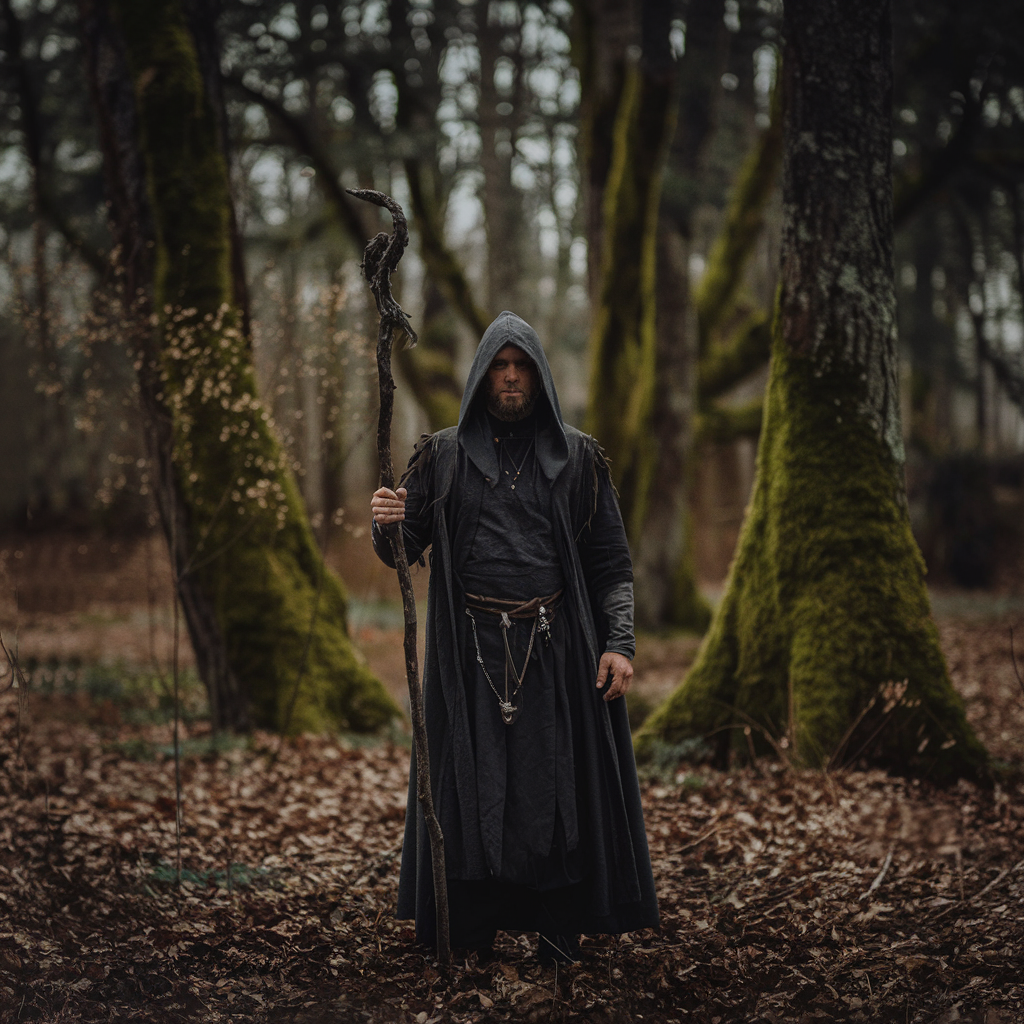Iceland, an island marked by mystical landscapes, hidden waterfalls, and fiery volcanoes, has long held a reputation as a place of deep cultural lore and magical traditions. Among the various figures of Icelandic folklore, örviri stands out as one of the most mysterious. The tales surrounding örviri are compelling, evoking a world where nature spirits, ghosts, and supernatural beings blend seamlessly into the land’s physical beauty.
In Icelandic tradition, örviri is often depicted as a mischievous yet protective figure associated with nature’s cycles and mysterious events in the Icelandic wilderness. Though accounts of örviri vary across regions and generations, this entity has retained a place of reverence and awe within Icelandic culture. This article delves into the origins, stories, symbolism, and cultural significance of örviri, revealing how this intriguing figure contributes to Iceland’s rich tapestry of folklore.
Unveiling the Origins of Örviri
Örviri’s origins are shrouded in mystery, as Icelandic folklore has always been transmitted orally, with local stories evolving and adapting over centuries. According to Icelandic legends, örviri emerged as a spirit connected with Iceland’s natural landscapes, especially the dense forests, glacial rivers, and expansive highlands. As with many folklore figures, örviri is believed to embody the wild, unpredictable side of nature, often appearing in times of solitude or danger.
Scholars suggest that örviri’s character may be linked to ancient Norse mythology, where natural elements and deities like Thor and Freyja represented the awe-inspiring power of nature. While örviri may not be directly derived from a specific Norse god, there are parallels in the spirit’s protective, nature-bound qualities that resonate with Icelandic pagan beliefs. This connection implies that örviri, like other spirits, might have served as a guardian figure to Iceland’s early settlers, offering protection and guidance in a harsh, unforgiving environment.
The Mystical Appearance of Örviri
Descriptions of örviri’s appearance vary significantly. Traditionally, örviri is envisioned as a small, elusive creature with attributes that can blend in with Iceland’s rocky terrains or forested areas. Some stories depict örviri as resembling an ethereal human form cloaked in shadows, while others say he has animalistic features that change depending on his surroundings.
This mystical figure is often said to carry a staff or lantern, lighting the way for travelers or casting an eerie glow in dark, isolated areas. The physical ambiguity of örviri adds to his mystique, as Icelandic storytellers often emphasize his ability to disappear or change form, making him an entity difficult to spot and even harder to catch.
Örviri’s Role in Icelandic Folktales
Icelandic folklore is replete with stories of örviri intervening in human affairs, usually for better, but sometimes in mischievous or confusing ways. In many tales, örviri assists travelers lost in the wilderness, guiding them safely through treacherous mountain paths or shielding them from dangerous weather. However, örviri can also act mischievously, leading unsuspecting wanderers in circles or hiding their belongings.
For instance, one popular tale recounts örviri guiding a young farmer who had lost his way in the snowy highlands. Just as he began to despair, the farmer noticed a faint glow in the distance. Following the light, he eventually stumbled upon a sheltered cave where he could rest for the night. The farmer credited örviri with saving his life, yet others in the village later described their own confusing encounters with mysterious lights, suspecting örviri’s involvement.
These stories capture the dual nature of örviri: a figure who can be both helpful and tricksy. His role varies widely, but he is always an integral part of Iceland’s folklore, embodying the unpredictable, untamed spirit of the Icelandic landscape itself.
The Symbolism of Örviri in Icelandic Culture
Symbolically, örviri represents the harmony and tension between humans and nature. Iceland, with its breathtaking but rugged terrain, has always necessitated a respectful relationship with nature. Many Icelanders view örviri as a reminder of nature’s power—both gentle and formidable. This symbolism is especially poignant given Iceland’s reliance on the environment for survival, from farming and fishing to the geothermal energy that powers much of the country today.
In a deeper sense, örviri may also embody the human need to find spiritual allies in nature. Iceland’s isolated geography and severe climate have historically led its people to seek companionship in the natural world, and örviri, as a benevolent yet wild spirit, represents that connection.
The Cultural Significance of Örviri in Modern Iceland
While some aspects of Icelandic folklore have faded with time, örviri remains a cultural symbol even in modern Iceland. Many locals still speak of örviri when discussing hikes into the Icelandic wilderness or mysterious occurrences in nature, often sharing tales of how the spirit might appear or even subtly guide the way. Örviri serves as a reminder of Iceland’s cultural heritage and its enduring respect for the mystical qualities of nature.
Moreover, the concept of örviri has been revived in recent years through Icelandic art, literature, and tourism. Artists often depict örviri in paintings and sculptures, while writers have incorporated the figure into contemporary Icelandic literature and fantasy works. For tourists, örviri has become a captivating figure, embodying the mystery and magic that many seek when exploring Iceland’s natural wonders.
Örviri and the Influence of Nature Spirits in Norse Mythology
Örviri’s existence in Icelandic folklore aligns with the wider tradition of nature spirits within Norse mythology. In Old Norse belief systems, spirits inhabited various elements of the natural world, from rivers and mountains to trees and animals. These entities, known as landvættir or land spirits, were respected and often invoked for protection and blessings.
While örviri is not a direct descendant of these land spirits, his presence in Icelandic folklore echoes their role. Icelandic settlers, many of whom were influenced by Norse culture, likely incorporated these beliefs into their own understanding of the land. As a result, örviri stands as a unique Icelandic interpretation of these ancient traditions, blending them with the island’s distinct geography and cultural context.
Örviri in Icelandic Art and Literature
Örviri has recently experienced a revival in Icelandic art and literature. Authors have written about örviri in children’s books, novels, and folklore collections, using the figure as a metaphor for Iceland’s natural beauty and inherent mystery. Artists, too, have been inspired by örviri, creating captivating illustrations, sculptures, and multimedia installations that capture the spirit’s elusive nature.
This resurgence of interest has brought örviri into the modern cultural conversation, bridging the gap between traditional folklore and contemporary storytelling. Örviri’s adaptability as a symbol of nature and mystery makes him a popular subject for artistic exploration, reflecting both Iceland’s storied past and its present-day fascination with the mystical.
Interpreting Örviri’s Legacy in Icelandic Society
Örviri’s legacy within Icelandic folklore is one of endurance and adaptability. Unlike other folklore figures that may have diminished in relevance over time, örviri has remained an integral part of Iceland’s cultural consciousness. This longevity speaks to the resilience of Icelandic traditions and the power of folklore to evolve alongside society.
As Iceland continues to embrace eco-tourism and sustainability, örviri’s association with nature takes on new meaning. The figure serves as a reminder of the importance of respecting and protecting Iceland’s fragile ecosystems, encouraging both locals and visitors to tread lightly in the country’s wilderness.
Is Örviri a Myth or Reality?
Whether örviri truly exists is a question that depends largely on one’s perspective. For many Icelanders, örviri exists as a cultural truth, an embodiment of Iceland’s natural beauty and mystical history. While scientists may not validate örviri’s existence, the spirit remains real in the minds and stories of those who live close to the land.
This belief in örviri as a spiritual guardian of the land is central to Icelandic culture, reflecting a worldview where reality and mythology coexist harmoniously. To those who experience the awe of Iceland’s landscapes, örviri’s presence can be felt as a subtle, mystical force that keeps the land alive with mystery.
Conclusion: The Timeless Mystique of Örviri
In Icelandic folklore, örviri stands as more than just a spirit or myth; he represents an enduring connection between the Icelandic people and their land. With a personality as unpredictable as the island’s volcanic terrain, örviri captures the imagination and respect of those who hear his tales. Today, as Iceland’s culture evolves and modernizes, örviri remains a timeless reminder of the country’s magical roots and the power of nature to inspire wonder and reverence.
For those curious to explore the folklore of Iceland, örviri provides a fascinating lens through which to view the island’s unique relationship with its natural environment. Whether you believe in his existence or not, örviri’s tales inspire respect for the wild beauty of Iceland, calling on all who visit to appreciate the landscape’s stories and its mystery.











